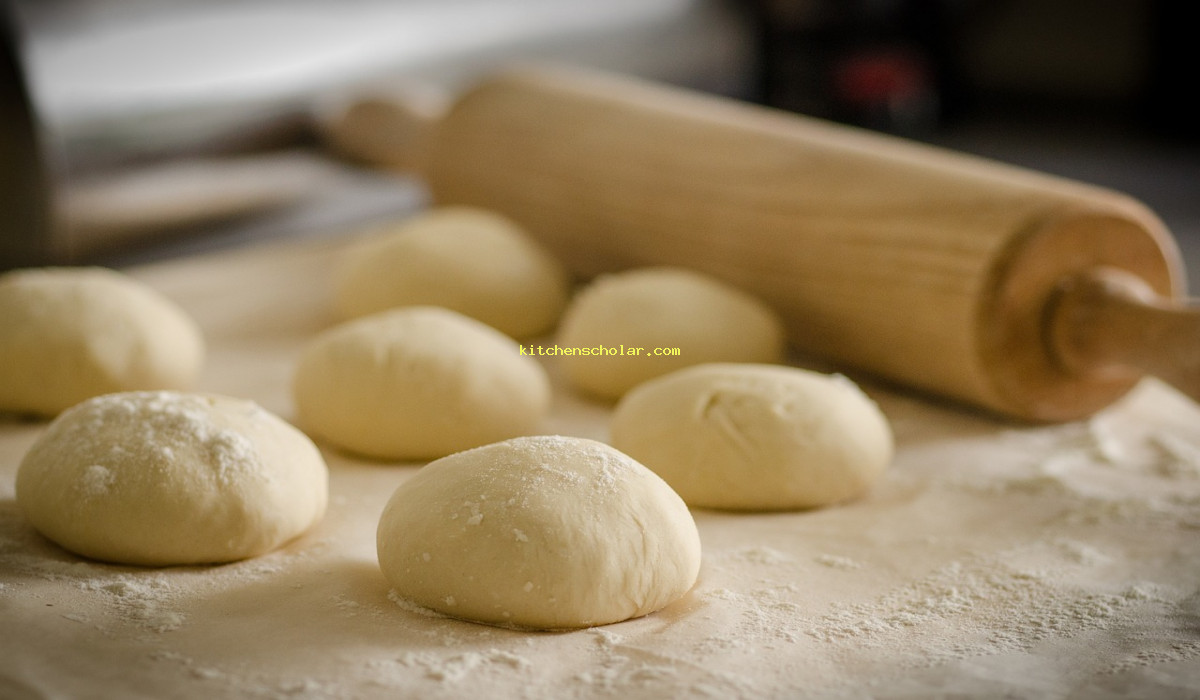6 Must-Try Japanese Kitchen Secrets for Delectable Dishes. Craving for authentic and flavorful Japanese cuisine? Look no further than the kitchen! Bring the taste of Japan into your home with our easy and delicious recipes for your everyday meals. Try the simplicity of sushi or the bold flavors of ramen, all in the comfort of your own kitchen. Discover the secrets of Japanese cooking with our diverse collection of dishes and elevate your dining experience to the next level. Don’t wait any longer, let’s bring Japan to your kitchen!
6 Must-Try Japanese Kitchen Secrets for Delectable Dishes
6 Must-Try Japanese Kitchen Secrets for Delectable Dishes. flavors of ramen 6 Must-Try Japanese Kitchen Secrets for Delectable Dishes
The Delightful Flavors of Japanese Cuisine in Your Kitchen
Japanese cuisine is renowned for its freshness, variety, and intricate flavors. From sashimi to tempura to ramen, there is a diverse range of dishes that make up the rich culinary landscape of Japan. While a trip to Japan may not be possible, you can bring the flavors of this enchanting country into your kitchen with ease. In this blog post, we will explore the key elements of Japanese cuisine and how you can bring them into your home.
The Simplicity of Japanese Cooking
Japanese cooking is known for its simplicity and use of fresh, seasonal ingredients. The focus is on highlighting the natural flavors of the ingredients rather than heavy sauces or spices. This philosophy of cooking, known as “washoku,” emphasizes balance, harmony, and the use of umami, the fifth taste. Umami is described as a savory, rich flavor and is often found in foods like mushrooms, soy sauce, and seaweed.

Key Ingredients in Japanese Cuisine
Japanese cuisine relies heavily on a few key ingredients that add a unique flavor to dishes. These include:
Soy Sauce
Soy sauce, also known as shoyu, is a staple in Japanese cuisine. It is made from fermented soybeans, wheat, water, and salt and has a salty and slightly sweet flavor. It is often used as a seasoning in soups, marinades, and stir-fries.
Rice Vinegar
Rice vinegar is another essential ingredient in Japanese cooking. It has a mild, slightly sweet flavor and is used in dressings, sauces, and pickling. It is made from fermented rice wine and has a lower acidity compared to other types of vinegar.
Miso
Miso is a paste made from fermented soybeans, rice or barley, salt, and koji, a mold culture. It has a savory, salty flavor and is used to make soups, marinades, and dressings.
Dashi
Dashi is a type of stock made from dried bonito flakes, kombu (dried kelp), and sometimes shiitake mushrooms. It is the base for many Japanese soups, including miso soup and noodle dishes such as udon and soba.
Noodles
Noodles are a common ingredient in many Japanese dishes. Ramen, soba, and udon are some widely used varieties and often served in soups, stir-fries, or cold salads.
Seafood
Being an island nation, Japan has a strong seafood culture. Fish, scallops, shrimp, and octopus are commonly used in Japanese dishes and offer a light, fresh flavor to dishes.
Regional Flavors of Japanese Cuisine
While there are some common ingredients and cooking techniques used in Japanese cuisine, each region has its own unique flavors and specialties.
Kanto Region (Eastern Japan)
The Kanto region is known for its refined, delicate flavors. Tokyo, the capital, is located in this region, and it has a wide range of dishes influenced by different cultures. Some popular dishes from this region include sushi, tempura, and sukiyaki.
Kansai Region (Western Japan)
The Kansai region, which includes Kyoto and Osaka, is known for its hearty and savory dishes. These include okonomiyaki (savory pancakes), takoyaki (octopus balls), and kushikatsu (deep-fried skewers).
Kyushu Region (Southern Japan)
The Kyushu region is known for its spicy and bold flavors, influenced by its close proximity to other Asian countries. Some popular dishes from this region include tonkotsu ramen (pork bone broth) and Hakata-style yakitori (skewered and grilled chicken).
Bringing Japanese Flavors into Your Kitchen
While Japanese cooking may seem intimidating, it is actually quite simple and adaptable to different lifestyles and dietary needs. Here are some steps you can follow to incorporate Japanese flavors into your cooking:
Stock Your Pantry
First and foremost, make sure to stock up on the key ingredients of Japanese cuisine, such as soy sauce, rice vinegar, miso, and dashi, as mentioned earlier. These will form the base of many dishes and add a distinct flavor to your cooking.
Try Different Types of Cooking
Japanese cuisine offers a wide variety of cooking techniques, from grilling and frying to steaming and simmering. Experiment with different methods to find your favorite or to switch things up in the kitchen.
Get Creative with Seasonings
While Japanese cooking is known for its simple flavors, there is still room for experimentation. Try adding different seasonings to your dishes, such as chili peppers, sesame oil, or yuzu juice, for a unique twist on traditional dishes.
Use Traditional Utensils
Using traditional Japanese utensils like a donabe (clay pot) or a bamboo steamer can add an authentic touch to your cooking. It also helps to enhance the flavors of the food being cooked.
6 Must-Try Japanese Kitchen Secrets for Delectable Dishes
Craving for authentic and flavorful Japanese cuisine? Look no further than the kitchen! Bring the taste of Japan into your home with our easy and delicious recipes for your everyday meals. Try the simplicity of sushi or the bold flavors of ramen, all in the comfort of your own kitchen. Discover the secrets of Japanese cooking with our diverse collection of dishes and elevate your dining experience to the next level. Don’t wait any longer, let’s bring Japan to your kitchen!. Kitchen 6 Must-Try Japanese Kitchen Secrets for Delectable Dishes
Cooking Up a Taste of Japan: How to Incorporate Japanese Cuisine into Your Kitchen
Japan is known for its rich culture, stunning landscapes, and delicious cuisine. From savory ramen noodles to delicate sushi rolls, Japanese food has become popular all over the world. And why wouldn’t it be? With an emphasis on fresh, seasonal ingredients and simple yet flavorful dishes, Japanese cuisine is a true culinary delight.
If you’re looking to bring some of that authentic Japanese taste into your kitchen, look no further. In this comprehensive guide, we’ll show you how to infuse your cooking with the flavors and techniques of Japan. From must-have ingredients to traditional cooking methods, we’ve got you covered.
Incorporating Japanese Culture into Your Cooking
Japanese cuisine is more than just food – it is deeply rooted in the culture and history of Japan. In order to truly embrace the flavors of Japanese food, it’s important to understand the cultural significance behind them. Here are some key aspects of Japanese culture to keep in mind when cooking Japanese dishes:
Kaiseki: The Art of Traditional Japanese Cooking
Kaiseki is a traditional style of Japanese cuisine that originated in the 16th century. It is known for its artistic presentation and emphasis on using fresh, seasonal ingredients. A kaiseki meal typically consists of multiple small courses served in a specific order, starting with a light appetizer and ending with a dessert. This style of cooking is often used in high-end Japanese restaurants and is a great way to experience the full range of flavors and textures in Japanese food.

Umami: The Fifth Taste
In addition to the four basic tastes of sweet, sour, salty, and bitter, umami is a fifth taste that is often described as savory or “meaty.” This is a crucial element in Japanese cooking and can be found in many traditional Japanese ingredients such as soy sauce, miso, and seaweed. Adding umami-rich ingredients to your dishes will give them that extra depth of flavor that is characteristic of Japanese cuisine.
The Importance of Freshness
In Japan, freshness is key when it comes to food. Many Japanese dishes use raw or lightly cooked ingredients, which means that quality and freshness are crucial. When shopping for ingredients, make sure to choose those that are in season and as fresh as possible. This will ensure that your dishes have the best possible flavor.
Must-Have Ingredients for Japanese Cooking
In order to create authentic Japanese dishes, it’s important to have a few key ingredients on hand. These ingredients can be found at most Asian grocery stores or online. Here are some essentials that you’ll need in your pantry:
Soy Sauce
Soy sauce is a staple in Japanese cooking, used for seasoning and adding flavor to dishes. It is made from fermented soybeans, wheat, and salt, giving it a salty and savory umami flavor. Look for high-quality, naturally brewed soy sauce for the best results.
Miso
Miso is another essential ingredient in Japanese cuisine, made from fermented soybeans and grains. It has a rich, salty, and slightly sweet flavor. Miso is commonly used in soups and marinades and can also be made into a delicious glaze for meats and vegetables.
Rice Vinegar
Rice vinegar is made from fermented rice and has a mild, slightly sweet flavor. It is often used as a seasoning for sushi rice and to add a tangy taste to sauces and dressings.
Seaweed
Seaweed, specifically nori and kombu, are commonly used in Japanese cooking. Nori is a type of edible seaweed that is used to wrap sushi rolls, while kombu is a type of kelp that adds a rich, salty flavor to broths and stews.
Dashi
Dashi is a traditional Japanese stock made from kombu, bonito flakes, and dried shiitake mushrooms. It is the base for many soups and stews in Japanese cuisine and adds a deep, savory flavor to dishes.
Traditional Japanese Cooking Techniques
Now that we have our must-have ingredients, let’s take a look at some traditional cooking techniques used in Japanese cuisine. These techniques are simple yet effective in bringing out the best flavors in your dishes.
Steaming
Steaming is a popular cooking method in Japan and is often used to cook vegetables, seafood, and rice. It is a gentle cooking method that helps retain the natural flavors and nutrients in the food.
Grilling (Yakimono)
Grilling, or yakimono, is another popular cooking method in Japan. Traditional Japanese grills, called robata, are often made with charcoal, giving the food a smoky flavor. Grilling is commonly used for meats, seafood, and vegetables in Japanese cuisine.
Broiling (Yakitori)
Yakitori, or broiling, is a cooking method in which food is cooked over a high heat source, such as a flame. This method is commonly used for skewered meats and vegetables and results in a deliciously charred and flavorful dish.
Tempura
Tempura is a type of deep-fried dish in Japanese cuisine. The batter is made from flour, egg, and ice-cold water, giving it a light and crispy texture. Common ingredients used in tempura include seafood, vegetables, and tofu.
Bringing It All Together: Traditional Japanese Dishes to Try
Now that you have a good understanding of Japanese cooking techniques and ingredients, it’s time to put it all into practice. Here are some traditional Japanese dishes that are perfect for incorporating into your kitchen:
Sushi
Sushi is a well-known Japanese dish and consists of seasoned vinegar rice topped with a variety of ingredients, such as raw fish or vegetables. It is often served with wasabi, pickled ginger, and soy sauce.
Ramen
Ramen is a popular noodle soup dish in Japan. It typically consists of wheat noodles in a savory broth, topped with ingredients such as pork, eggs, and vegetables. Ramen can be made with a variety of broths, including pork, chicken, or seafood.
Teriyaki
Teriyaki is a cooking technique in which meats or vegetables are brushed with a sweet and savory glaze made from soy sauce, mirin, and sugar, and then grilled or broiled. This dish is always a crowd-pleaser and can be served with rice and steamed vegetables.
Exploring the World of Japanese Cuisine
While this guide covers the basics of Japanese cooking, there is so much more to explore. As you become more familiar with the flavors and techniques of Japanese cuisine, feel free to experiment and make dishes your own. And don’t forget to have fun with it – cooking and enjoying delicious food is a big part of Japanese culture, so embrace it and let your culinary journey begin. 6 Must-Try Japanese Kitchen Secrets for Delectable Dishes

6 Must-Try Japanese Kitchen Secrets for Delectable Dishes
What is the role of rice in Japanese cuisine?
Japanese cuisine is heavily centered around rice, with almost every meal including a serving of steamed rice. In fact, the Japanese word for “meal” is the same as the word for “rice,” highlighting its importance to the cuisine.
What is the difference between sushi and sashimi?
Sushi and sashimi are often used interchangeably, but they are actually two distinct dishes. Sushi refers to any dish that contains vinegared rice, while sashimi refers to thin slices of raw fish.
What is the most popular cooking method in Japanese cuisine?
The most popular method of cooking in Japanese cuisine is through grilling or broiling, known as “yakimono.” This method is used for a variety of foods, including meat, fish, and vegetables.
What is the main seasoning used in Japanese cuisine?
The main seasoning used in Japanese cuisine is soy sauce, or “shoyu.” It is made from fermented soybeans, wheat, water, and salt, and is used in a variety of dishes to enhance flavor.
How important is presentation in Japanese cuisine?
Presentation is highly valued in Japanese cuisine, as it is believed that food should appeal to all five senses, not just taste. This can be seen in the intricate plating and attention to detail in dishes.
What is a traditional Japanese breakfast?
A traditional Japanese breakfast, known as “asagohan,” typically consists of steamed rice, miso soup, grilled fish, vegetables, and pickled side dishes. This healthy and balanced meal is designed to provide energy for the day ahead.
What is the significance of tea in Japanese culture?
Tea, or “ocha,” has a long-standing tradition in Japanese culture and is deeply ingrained in everyday life. It is often served with meals, as a gesture of hospitality, and during tea ceremonies as a form of meditation and relaxation.
What is the difference between ramen and udon noodles?
Ramen and udon noodles are both popular types of noodles in Japanese cuisine, but they differ in texture and shape. Ramen noodles are thin and curly, while udon noodles are thick and round.
What are the main ingredients used in Japanese hot pot dishes?
Japanese hot pot, or “nabemono,” typically consists of a variety of ingredients cooked in a communal pot of broth at the table. Some common ingredients used include thinly sliced meat, vegetables, tofu, and noodles.
What type of fish is most commonly used in sushi?
The most commonly used fish in sushi is tuna, specifically the fatty cuts known as “toro.” Other popular fish used include salmon, yellowtail, and mackerel. 6 Must-Try Japanese Kitchen Secrets for Delectable Dishes
